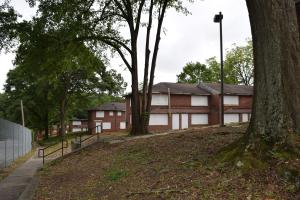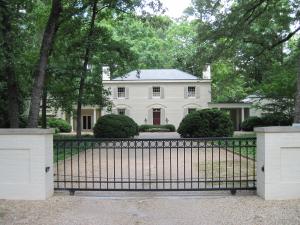Georgia Adds Three New Resources to the National Register of Historic Places

Georgia has added three new listings to the National Register of Historic Places. The listings highlight the breadth of Georgia’s historic heritage.
The nominations include:
- Washington Carver Homes, City of East Point, Fulton County
- Daniel E. Conklin House, City of Atlanta, Fulton County
- Virginia-Highland Historic District Expansion, City of Atlanta., Fulton and DeKalb Counties
Listing nominations are in line with the Historic Preservation Division’s (HPD) mission to promote the preservation and use of historic places for a better Georgia.
HPD hopes sharing this information will encourage more historic property preservation through public awareness and an appreciation of the impact they have on our social and economic lives.
As of January 18, 2023, Georgia has 2,207 listings comprising 90,020 resources in the National Register of Historic Places.
For more information on the newest listings, see below:
Washington Carver Homes, City of East Point, Fulton County
Washington Carver Homes consists of twenty buildings constructed as a public housing development by the City of East Point Housing Authority in 1951. Washington Carver Homes is significant as a physical record of federal intervention and involvement in the housing sector in East Point after the Great Depression. Built exclusively for African Americans, the buildings are an important record of racial segregation during the mid-20th century. The buildings embody key architectural features and site planning practices characteristic of public housing developments across the nation including functional, utilitarian designs; repetitive building forms; an ordered “superblock” plan; substantial open spaces; and integral circulation networks. Developed across
the country between 1930 and the early 1950s, the United States has a dwindling number of these low-rise, multi-unit public housing complexes and Washington Carver Homes is the only remaining example in East Point.
Washington Carver Homes was listed in the National Register of Historic Places on January 18, 2023. The nomination was sponsored by Braden Fellman Group, Ltd., and nomination materials were prepared by WLA Studio and Braden Fellman Group, Ltd.

Daniel E. Conklin House, City of Atlanta, Fulton County
The 1937 Daniel E. Conklin House is located in Tuxedo Park, a residential neighborhood in northwest Atlanta. Nationally renowned architect Philip Trammell Shutze designed the house in the English Regency Revival style. The style emerged in England in the early 1800s and experienced a period of resurgence in the United States from post-World War I until 1950. The Daniel E. Conklin House embodies the character-defining features of the English Regency style: cubic massing, stuccoed facades, clean lines, projecting bays, and spare use of ornament. Throughout his prolific career, architect Philip Shutze designed a variety of building types: commercial, religious, as well as multi- and single-family residential. Shutze was the recipient of numerous awards and accolades and has at least nine other buildings from the Atlanta area listed in the National Register of Historic Places.
The Daniel E. Conklin House was listed in the National Register of Historic Places on December 19, 2022. The nomination was sponsored by the homeowner, Jean Astrop, and nomination materials were prepared by Dr. Laura Drummond, Principal, Atlanta Preservation & Planning Services, LLC.

Virginia-Highland Historic District, City of Atlanta, Fulton County and DeKalb County
Virginia-Highland Historic District is a large, primarily residential area, located approximately three miles northeast of downtown Atlanta. The district encompasses multiple subdivisions which over time became collectively known as Virginia-Highland. Lying primarily in Fulton County, the easternmost corner of the district is in DeKalb County. Virginia-Highland Historic District was listed in the National Register of Historic Places in 2005. In 2022, HPD formally requested an extension to expand the period of significance from 1899 - 1955 to 1889 - 1972. The updated period of significance allows additional resources within the district, such as mid-century buildings and apartment complexes, to be considered for rehabilitation tax credits, grants, and other incentives.
The Virginia-Highland Historic District Additional Documentation was listed in the National Register of Historic Places on October 24, 2022. The nomination was sponsored by Virginia-Highland Civic Association, and nomination materials were prepared by Ray, Ellis & LaBrie Consulting, LLC.

The Historic Preservation Division’s programs include environmental review, grants, historic resource surveys, tax incentives, the National Register of Historic Places, and community assistance. To learn more about HPD and its mission to promote the preservation and use of historic places for a better Georgia, click here.



